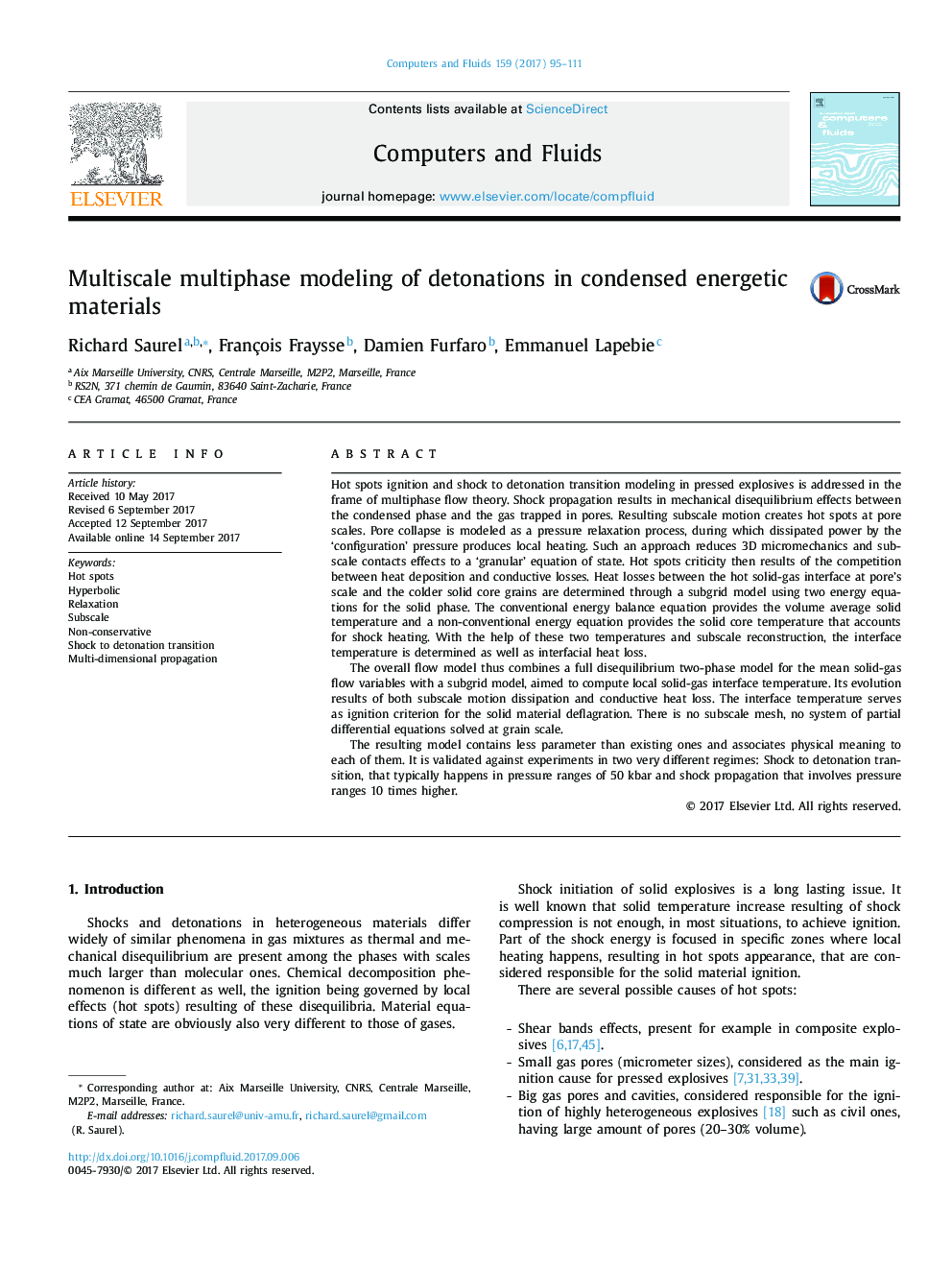| کد مقاله | کد نشریه | سال انتشار | مقاله انگلیسی | نسخه تمام متن |
|---|---|---|---|---|
| 5011658 | 1462652 | 2017 | 17 صفحه PDF | دانلود رایگان |
- A new micro-macro model for shock to detonation transition in pressed explosives is developed.
- It contains less parameter than existing ones.
- Accurate results in both extreme regimes of shock to detonation transition and multi-D propagation are obtained.
Hot spots ignition and shock to detonation transition modeling in pressed explosives is addressed in the frame of multiphase flow theory. Shock propagation results in mechanical disequilibrium effects between the condensed phase and the gas trapped in pores. Resulting subscale motion creates hot spots at pore scales. Pore collapse is modeled as a pressure relaxation process, during which dissipated power by the 'configuration' pressure produces local heating. Such an approach reduces 3D micromechanics and subscale contacts effects to a 'granular' equation of state. Hot spots criticity then results of the competition between heat deposition and conductive losses. Heat losses between the hot solid-gas interface at pore's scale and the colder solid core grains are determined through a subgrid model using two energy equations for the solid phase. The conventional energy balance equation provides the volume average solid temperature and a non-conventional energy equation provides the solid core temperature that accounts for shock heating. With the help of these two temperatures and subscale reconstruction, the interface temperature is determined as well as interfacial heat loss.The overall flow model thus combines a full disequilibrium two-phase model for the mean solid-gas flow variables with a subgrid model, aimed to compute local solid-gas interface temperature. Its evolution results of both subscale motion dissipation and conductive heat loss. The interface temperature serves as ignition criterion for the solid material deflagration. There is no subscale mesh, no system of partial differential equations solved at grain scale.The resulting model contains less parameter than existing ones and associates physical meaning to each of them. It is validated against experiments in two very different regimes: Shock to detonation transition, that typically happens in pressure ranges of 50Â kbar and shock propagation that involves pressure ranges 10 times higher.
Journal: Computers & Fluids - Volume 159, 15 December 2017, Pages 95-111
